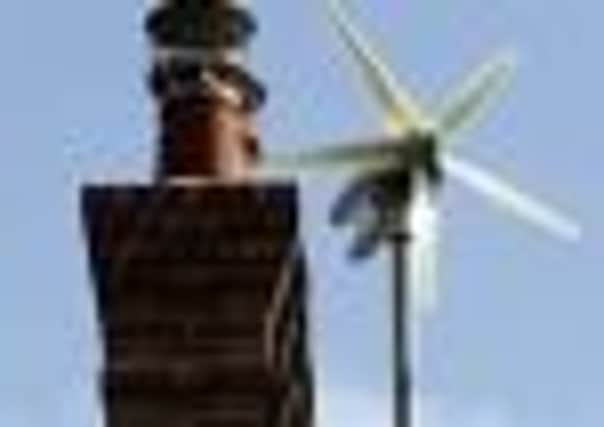Wind power at home


The question is: could your home be suitable for one?
On the face of it, wind turbines are a good bet because the UK gets around 40 per cent of the wind energy in Europe.
The advantages of having your own turbine are that you get free electricity (although you obviously have to pay for the turbine and its installation) and reduce your CO2 emissions.
Advertisement
Hide AdAdvertisement
Hide AdAs long as your turbine complies, you can also earn money through the Government’s Feed-in Tariffs scheme (see www.energysavingtrust.org.uk).
This will pay you not only for the electricity you generate and use, but also for any you export to the National Grid.
There are two types of domestic wind turbine: pole or mast-mounted ones, which are free-standing and usually around 5kW-6kW in power, and roof-mounted ones, which are smaller, at typically 1kW-2kW.
Turbines either store the electricity they generate in batteries, so it can be used on days when there’s little or no wind, or are connected to the National Grid.
Advertisement
Hide AdAdvertisement
Hide AdRoof-mounted turbines are the cheapest option. The Energy Saving Trust says that a domestic roof-mounted 1kW turbine will cost around £2,000, while a 6kW pole-mounted one will be around £22,500.
It estimates that annual maintenance will cost £100-£200, with a well-maintained turbine lasting more than 20 years. If the turbine has batteries, these will need to be replaced every six to ten years on average.
Location is key. They important things are the speed and direction of the wind and what obstructions are in the way, such as trees and buildings. Because of this, wind turbines aren’t suitable for a lot of homes, but if you think yours might be a candidate, fitting an anemometer (wind gauge) for at least three months is the best way to find out how much wind it gets.
Most turbines need a minimum wind speed before they can start generating electricity, so check with the manufacturer before you invest in one. The ideal location is a smooth-topped hill that’s exposed and free from obstructions and turbulence.
Advertisement
Hide AdAdvertisement
Hide AdPlanning permission often isn’t required for a domestic wind turbine, but check with your local council first because there will be exceptions. If your home’s leasehold, you may need the permission of the freeholder, especially if you want to put the turbine on the roof.